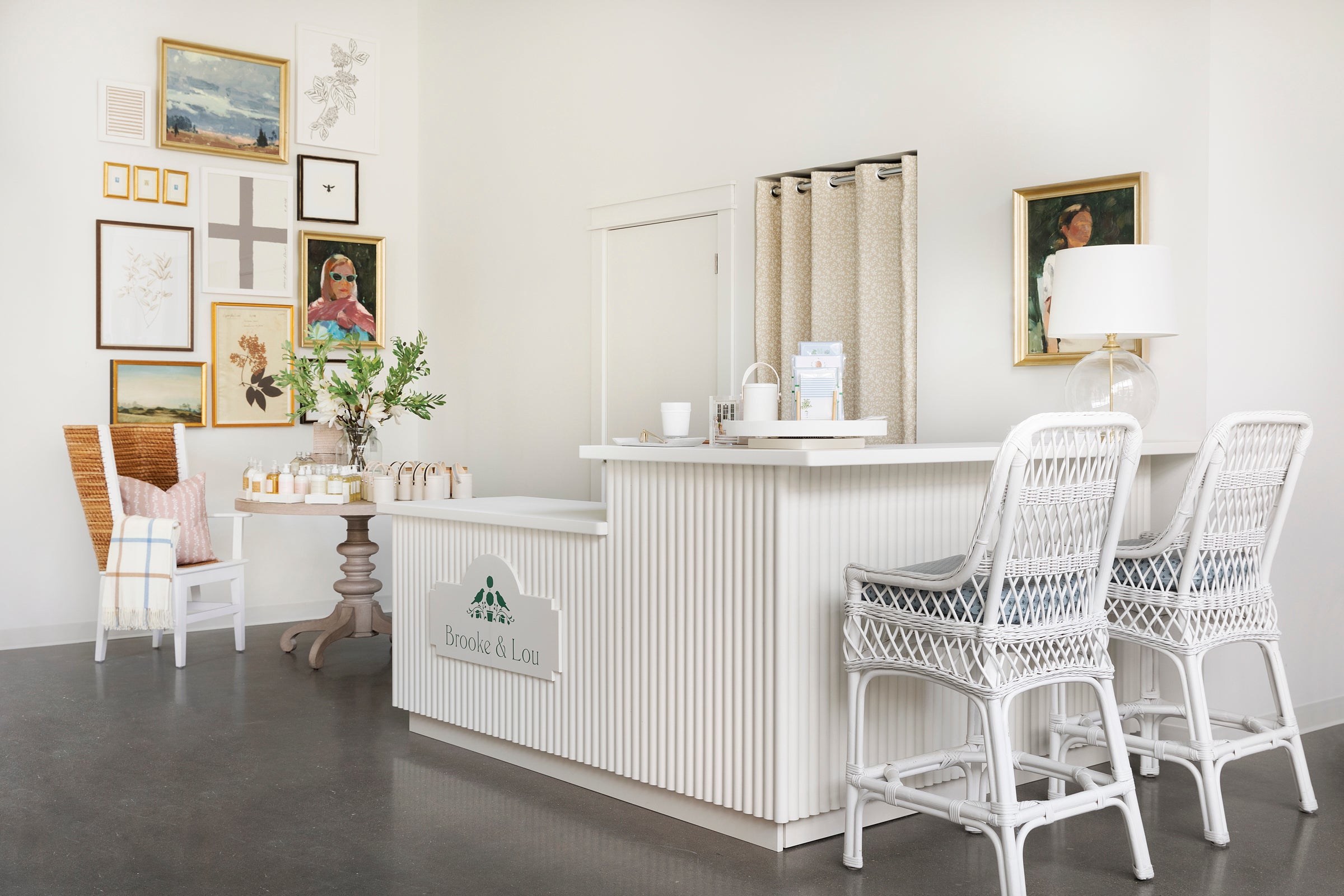In Business of Home’s series Shop Talk, we chat with owners of home furnishings stores across the country to hear about their hard-won lessons and challenges, big and small—to find out what they see for the future of small industry businesses like theirs.
This week, we spoke with Edina, Minnesota–based interior designer Bria Hammel, who didn’t set out to run a brick-and-mortar store. Instead, she was approached in the spring of 2021 about a retail pop-up, which proved so popular she’s maintained it as Brooke & Lou, which is named for her two children. Hammel explained how she built a family-friendly niche, why she loves events and how hiring an amazing team allowed her to find some balance.

What was your professional background before the shop?
I opened up my interior design firm 10 years ago. We’re based out of Minnesota, but we work all over the country, which I love. About four years ago, we decided we wanted to be more accessible to the people we were reaching on social media. Some of the customer inquiries we were getting didn’t necessarily need full service, but they loved our aesthetic and wanted to infuse some of our style into their homes. We decided that it would be a good opportunity to launch a retail brand. We started exclusively online, with no real plans of doing a brick-and-mortar store. Then, during the pandemic, a real estate developer reached out and said he was working on this new retail area in the city that I grew up in, and he thought it would be a really great opportunity for us to try a pop-up store. They were offering really great lease terms of six months, so it was a very low-risk situation considering it was deep in the heart of COVID. It was a year ago in April that we opened up officially, thinking that we were just going to do it for six months. I just enjoyed the process so much and loved being able to meet our customers in person and have our product more visible to the consumer, so we decided to stay open.
What’s the general vibe of the store?
We definitely embrace the traditional—a youthful take on traditional. We mix a lot of clean lines with traditional detail, like rattan and wicker and scallops and feminine details like that.
You use “Life Friendly” as a tagline. Can you tell me about that concept?
I really believe in livable design. We tend to attract younger families and people that want to use their homes. We’ve been designing with this life-friendly mentality for a long time, making sure we have durable fabrics and products that stand up to busy lifestyles. When we launched Brooke & Lou, it was an important part of our business to home in on those products. We sell upholstery in Crypton fabrics and performance fabrics, and our wallpaper is all washable. We put our “Life Friendly” trademark on a product page when [it meets those standards].
Outside of families, who else is your typical customer?
We attract a lot of people, specifically women, who want to refresh their homes. We see people who might be entertaining that weekend and want a new tablescape, or they’re changing out their winter decor to their spring decor and they want a refresh on their pillows and accessories. I think people love that they can come and grab and go, and take a new look with them. It’s those little touches that can freshen up a space.
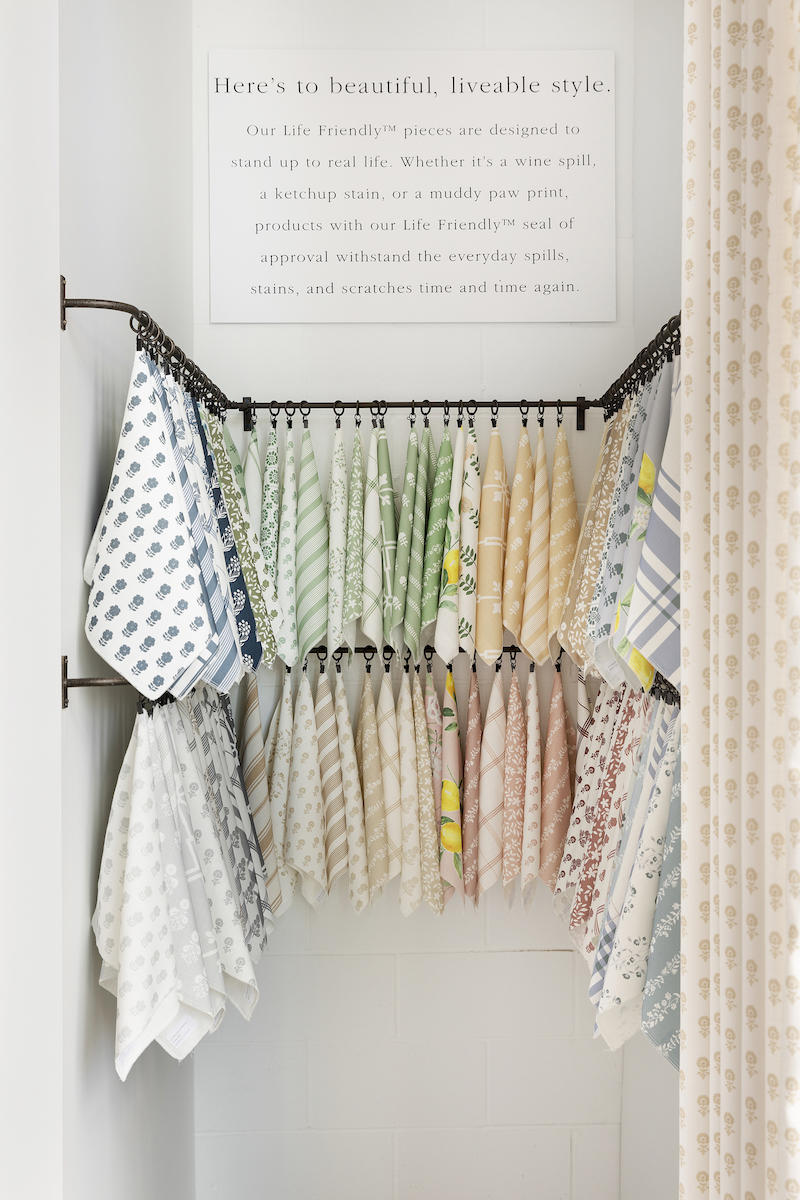
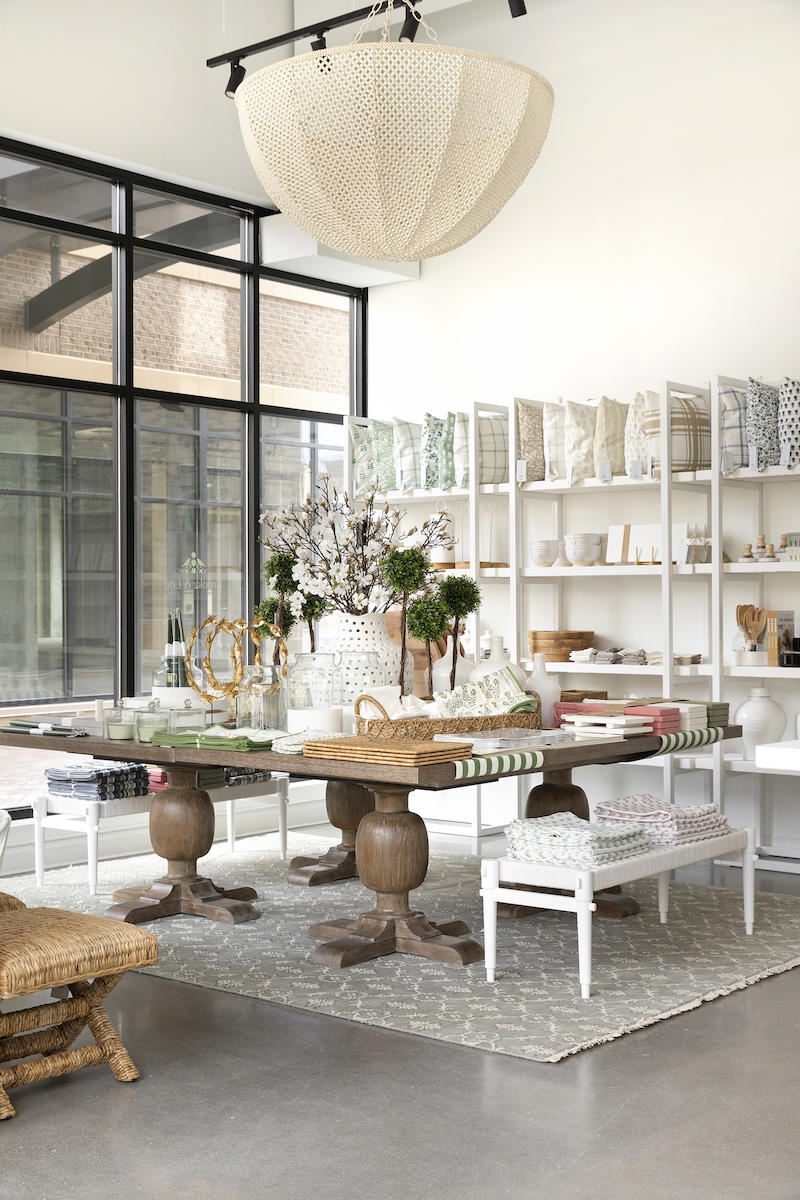
Do you have a favorite vendor or someone you want to shout out?
We just did a collaboration with EtúHome, and designed a product line that launched this April. It fits so appropriately into the store because it’s our aesthetic, but in general EtúHome products do really well and we carry more than just the products we designed with them. They’re a great company, and people understand the quality and the fact that it’s hand-made in Europe. We love the story that goes with it.
What’s your favorite product category in the store?
I love to set up a good tablescape, so I love place mats, napkins, napkin rings. Right now, we have a lot of melamine outdoor dishware that’s selling like crazy. You can come and refresh your table and host a party that evening, and it all just feels beautiful and new.
Is there something that flies off the shelves, that you can’t keep in stock?
Two things: We have this candle that has become our signature scent without us necessarily intending to do that. It’s a coconut-sugar scent, and it’s the first thing you smell when you walk in. Most people don’t leave without buying a candle because it smells so good. You don’t even have to light it, and it still fills the room with this beautiful scent. And then we just launched Juliska this past spring, and that is a product that we cannot keep on our shelves, online and in store. People just love the brand. We sell all of their melamine right now, and it’s high quality, beautiful, timeless. It is worth the investment because it’s not a trend. It’s just beautiful pieces that’ll last you forever.
What advice would you give yourself if you could go back to opening day? Considering that you didn’t intend to open a store!
The biggest thing is, I look at our store as more than just a revenue driver. It’s really a place where we can meet potential clients for our design business. They’re seeing the product, they’re looking at fabric and wallpaper samples, and then they’re purchasing online. I try not to segment out what the brick-and-mortar store does [in revenue] versus the online store, because we see a lot of people come into the store, and our store manager can say, “That lady was in the store; I helped her with samples. We saw her purchase the sofa the next day online.” So, make sure that you’re paying attention not just to the success of the store by dollars spent there, but collectively what it does for your business.
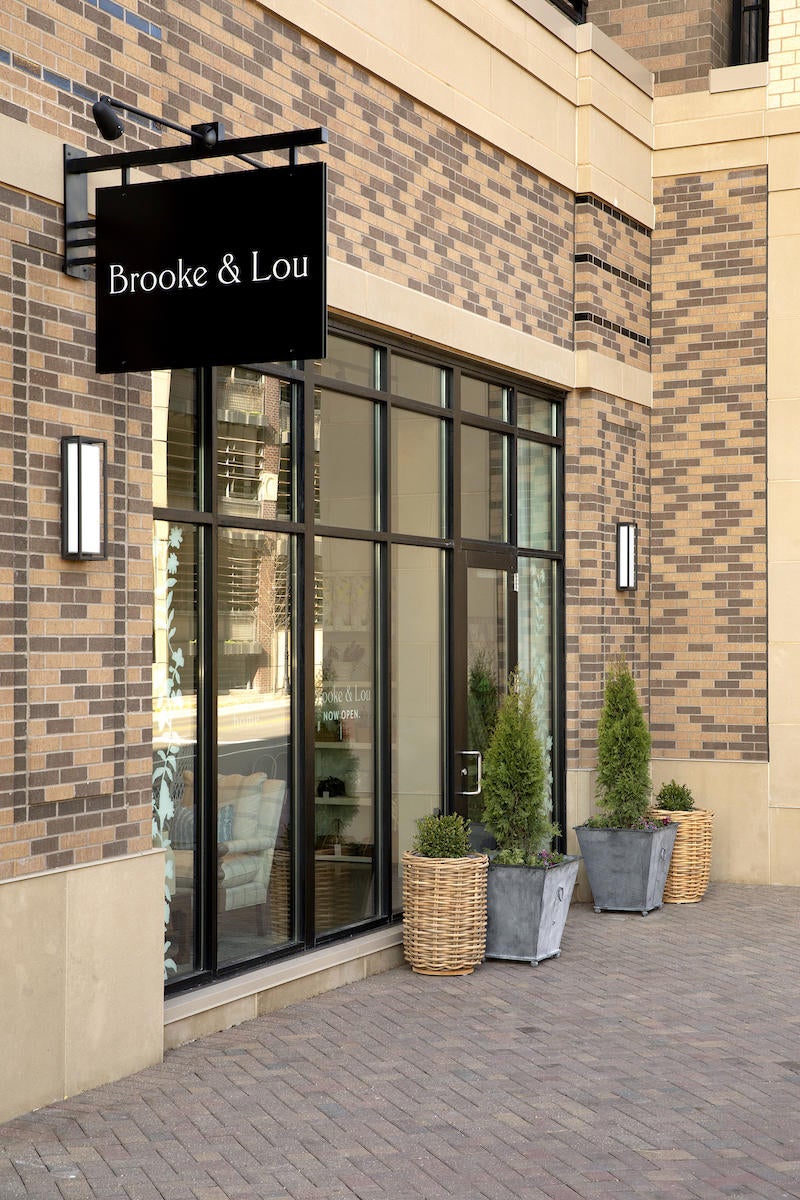
What’s your biggest everyday challenge?
The store is in an outdoor shopping area. Being in Minnesota, we have a lot of success in three of the four seasons, but our winter, which happens to be half of the year, can be tricky to get people to come in because it’s cold. That’s why we have so many indoor malls in Minnesota. That’s the trickiest part—trying to keep traffic steady and busy in those cold winter months.
What about existential challenges or worries?
We’re in a really small footprint right now—900 square feet. My thought is always, If we had a bigger storefront, would we sell more? A bigger store also costs a lot more money, and I don’t know that it would drive more business. We’re always teeter-tottering: Do we stay in the small footprint and play it safe, or do we go bigger so we can show more product and potentially sell more out of the store?
How do you balance the store with your design business?
You know what? I have a really, really great team. I don’t work every hour of the day. I have two little kids, and it’s always been very important to me to be able to have balance. And I don’t say “work-life balance,” because honestly, work is my life. I bring my kids into the store sometimes, if I need to be there for an event. I have a store manager who handles the scheduling. She’s there to cover shifts if someone doesn’t show up. I think it goes down to hiring the right people. I do not do this by myself, and I couldn’t do it if it was just me. I really lean on my team to help me do it all. And I include my family—my husband is always helping us move things around and driving things from our warehouse to the store and to our office, and it’s a team effort. I’m leaving this afternoon to go help my friend shop for plants and not do work. I can do it, because I have a great team.
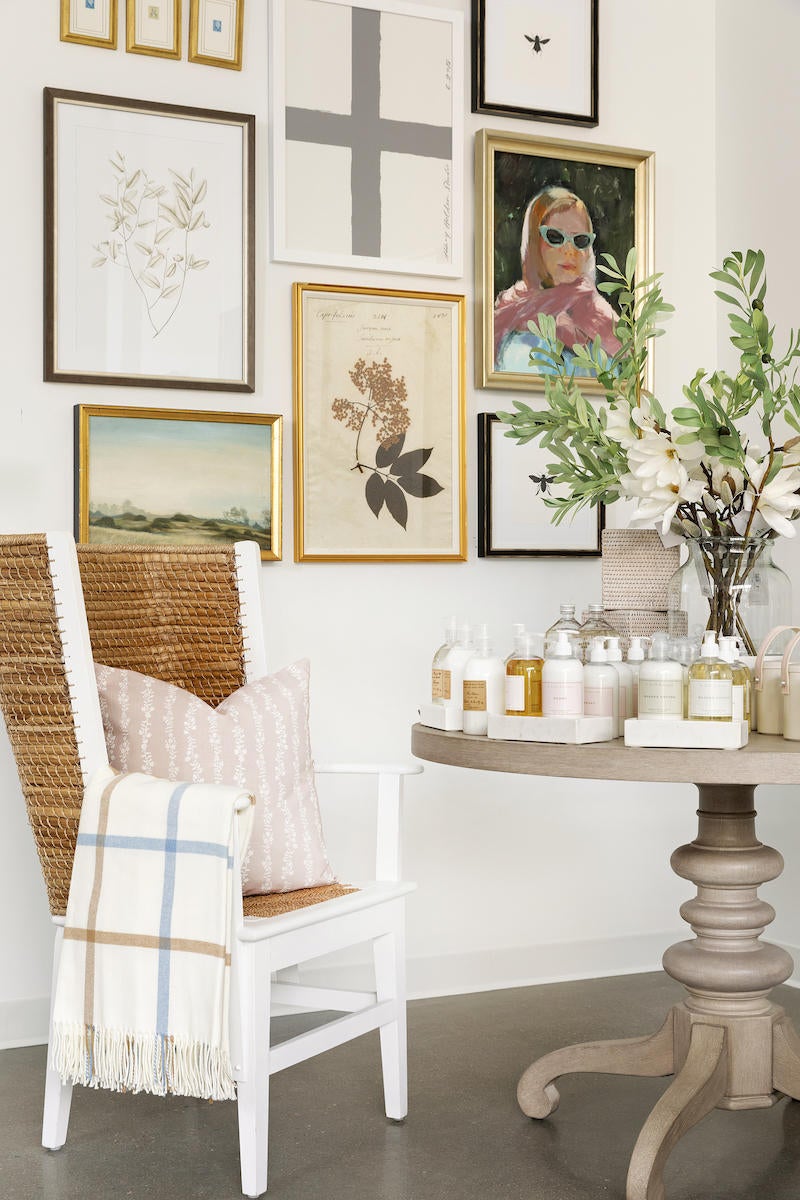
How do you convey to customers that what you are selling is more worthwhile than the cheap things they see on the internet?
We spend a lot of time training our team on quality. In a month, I’m sending them all to one of the local showrooms. The president of the company is coming, and he calls it a chair breakdown: He breaks down the furniture line that we sell and brings a low-quality chair that looks the same and breaks that one down and shows the inner parts of these pieces of furniture, and how the inexpensive one is made of cardboard, and this one is made of hardwood. You can physically see for yourself which one is going to last. So we put a lot of training in so that we can educate our customers. And then we’re always trying to share videos and how-tos and information online and on social media about our quality. Obviously, as designers, that’s our job every day: to sell the quality and what comes with the price point. We’re selling heirloom furniture; we’re not in it for this mass-production. We want people buying a sofa because they know that they’re going to have it forever.
What can you tell me about the city of Edina? I hear it’s a burgeoning design hub!
I always tell people that we live in a hidden gem! There are a lot of creatives in Minnesota. The artist who does all of our exclusive prints for fabrics and wallpapers is from Minnesota; our wallpaper printer is from Minnesota; our fabric printer and our pillow maker are all local. It’s not common to have a city with all of these artisans and manufacturing companies. That’s been a blessing for us—there’s something to be said when you’re trying to work on a dye lot or a color selection for fabric, for being able to run over to your printer and work with them on it. That’s saved us a lot of time and money, to be able to locally source and work with the artisans in person.
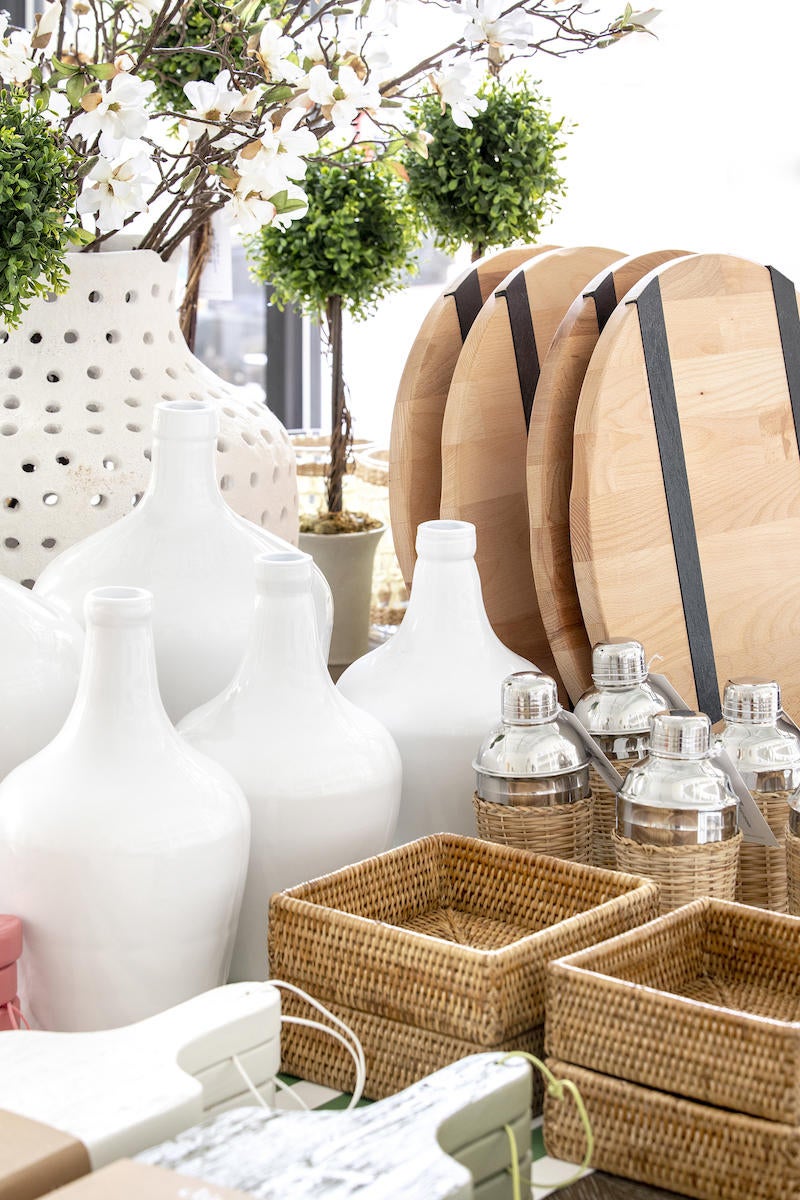
What would you say is the future of small businesses like yours?
I don’t think brick-and-mortar is going anywhere. I know that our customers feel this way, too; they crave that in-person experience, especially since we weren’t able to have it for a while. I think that customers are, more than ever, looking for customer service. They want it to be personal. They want to feel known. My store manager knows all of our regulars’ names, their stories, what they’ve purchased, their families. They love that, because they come in and call my manager by name, and they’re like, “OK, what should I get now?” And she says, “I remember you got this last time, you should try this; it would go perfect with it.” That in-person, personal experience is huge. Either you go big box, or you go really small. The in-between might be going away.
What’s your favorite day as a shop owner?
We try to have events at least quarterly, where we send personal invitations to our regular customers and to family and friends. It might be for a new product launch or a new season changing in the store. We get such great turnout. The last one we had was in April for our EtúHome collection, and it was an actual party. People came, and they stayed and they bought and they had cocktails and they mingled—for hours. We kind of thought people would just come in, see the product, do a little shopping and leave. But people were there for hours, and that was just such a joy for me to see—that people not only love being in the store, but they feel comfortable being there long enough to stay and meet one another.
Homepage photo: Brooke & Lou | Photo by Spacecrafting Photography
















